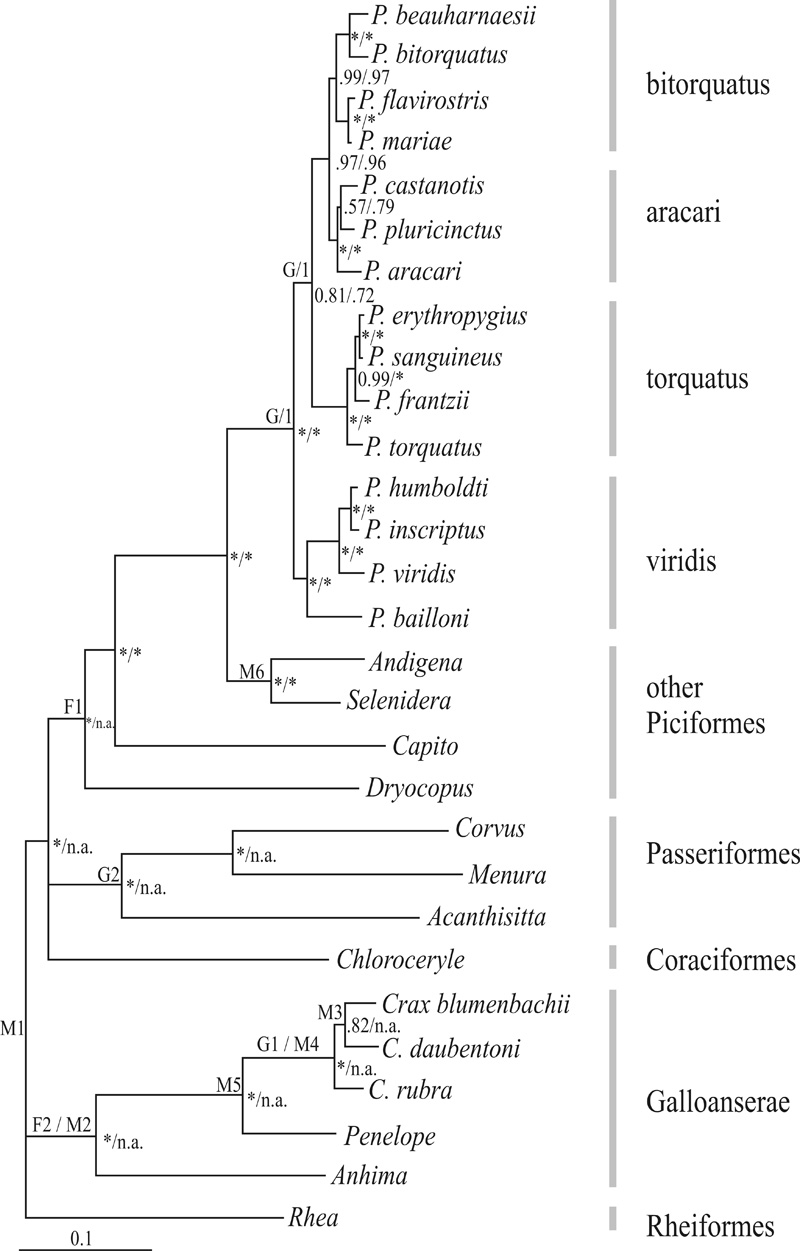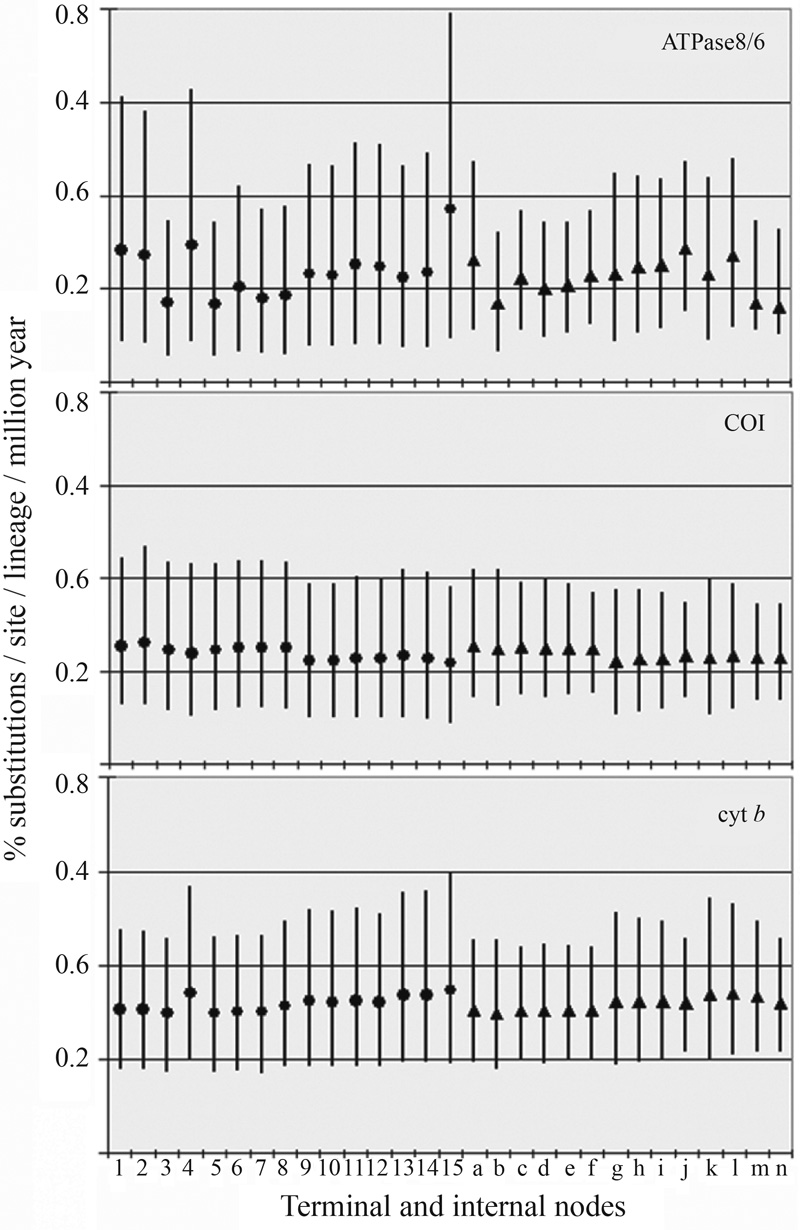Most Neotropical birds, including Pteroglossus aracaris, do not have an adequate fossil record to be used as time constraints in molecular dating. Hence, the evolutionary timeframe of the avian biota can only be inferred using alternative time constraints. We applied a Bayesian relaxed clock approach to propose an alternative interpretation for the historical biogeography of Pteroglossus based on mitochondrial DNA sequences, using different combinations of outgroups and time constraints obtained from outgroup fossils, vicariant barriers and molecular time estimates. The results indicated that outgroup choice has little effect on the Bayesian posterior distribution of divergence times within Pteroglossus , that geological and molecular time constraints seem equally suitable to estimate the Bayesian posterior distribution of divergence times for Pteroglossus , and that the fossil record alone overestimates divergence times within the fossil-lacking ingroup. The Bayesian estimates of divergence times suggest that the radiation of Pteroglossus occurred from the Late Miocene to the Pliocene (three times older than estimated by the “standard” mitochondrial rate of 2% sequence divergence per million years), likely triggered by Andean uplift, multiple episodes of marine transgressions in South America, and formation of present-day river basins. The time estimates are in agreement with other Neotropical taxa with similar geographic distributions.
Pteroglossus; Ramphastidae; aves; molecular time estimates; biogeography



